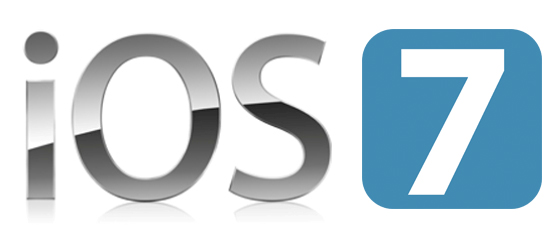A new report from 9to5Mac and its usually well-connected sources today adds a little more color to what we’ll be seeing from the big iOS 7 redesign rumored to be making an appearance at WWDC this year in June – and what we’ll apparently be seeing is a lot less color. The visual overhaul not only emphasizes so-called “flat design” (avoiding complicated textures in favor of bold, solid tones), but also features the use of many black and white elements across the UI.
The new report reiterates what we’ve already heard – that Ive is heading up a pretty extensive overhaul of Apple’s mobile OS, concentrating primarily on the visual aspects of iOS. Now, though, we get a bit more info about how and why Ive is targeting so-called skeuomorphic elements (those that mimic real-world textures) and additional details about specific elements of the OS that have undergone change, plus redesigned apps and even some new features.
Ive feels that the sorts of heavy textures used in the current iteration of iOS aren’t designed to last, and will quickly take on a dated look, according to 9to5Mac’s sources. Physical metaphors for digital design are a dead end, he apparently believes, and makes for a lack of harmony between and among individual iOS apps like Notes, Maps and Game Center. It’s true that other, more recent takes on mobile interfaces have focused more on unity, like Windows Phone, but it’s also true that from a success perspective, iOS has trounced Microsoft’s newer mobile OS; flat design may have the praise of the tech community, but it hasn’t necessarily proved itself in the consumer arena yet.
Other big changes coming to what people are used to on iPhone include the lock screen mechanisms, which will finally see the iconic lock screen re-envisioned with a “shine-free, black interface” says 9to5Mac. Round buttons will replace the grid for security code input, and notifications might get more useful thanks to expanded interactivity options made possible through multi-touch gestures.
Notifications in general will get some changes, ditching the linen texture background per the report in favor of something more black and white. More widgets are on their way to Notification Center, too, and we could see access included to regularly-accessed settings, including Wi-Fi, Bluetooth and the Airplane Mode switch.
The Home Screen gets a minor but notable visual refresh, losing the shine on buttons and system apps given flatter designs that don’t “pop” quite as much as the current versions. iOS 7 also apparently borrows a trick from Android, adding in panorama-style scrollable wallpapers that continue across home screens, instead of presenting the same static image for each. In general, common interface elements like the on-screen keyboard will undergo a flattening effect, ditching things like drop shadow and toning down the color in favor of greys, whites and blacks. This extends to core apps like Mail, Calendar, Maps and Notes, each of which have more uniformed, primarily white interfaces. Each also gets a unique olor for buttons and highlights, however, providing a strong visual cue about which you’re using while retaining a similarity of design across all the software.
New features reportedly include a standalone FaceTime app for iPhone, as well as Flickr and Vimeo integration, and better in-car tools connected to Maps and Siri for hands-free use. We’ll also see a lot of changes on the developer side, likely with the introduction of many new APIs to unlock more potential for apps, something which has become a common feature of iOS updates.
9to5 reports that we’ll see this arrive for the general public along with new iPhone and possibly iPad hardware this fall. The iPhone version of the iOS 7 redesign might beat the iPad version out of the gate however, as the report claims that Apple’s design and engineering talent are focused on pushing out the smartphone version first. Hopefully we’ll learn more at the WWDC keynote, which is coming up June 10, and where we’ll be reporting live.































Comment